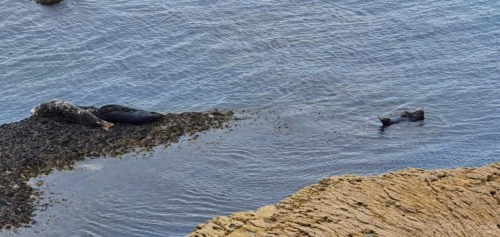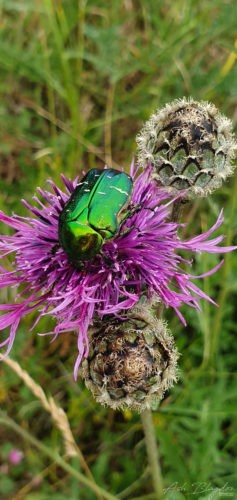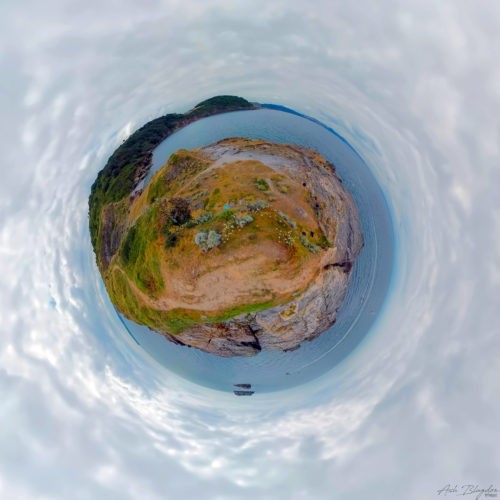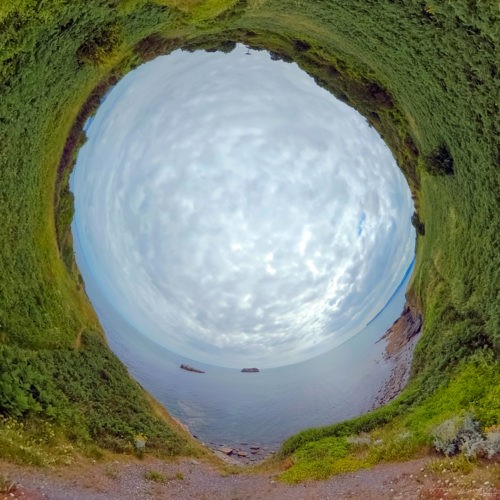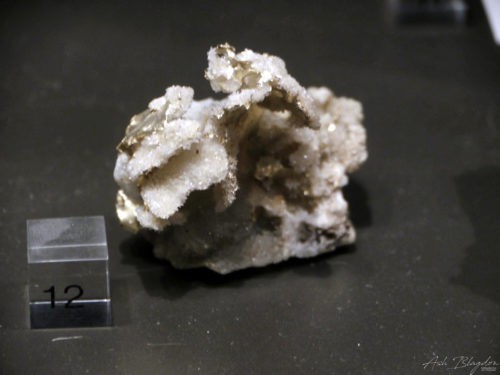Enjoy a 360 virtual tour of Hopes Nose with amazing views, an abundance of wildlife and a raised beach formed during the last ice age.
As you walk down to the tip of Hope’s Nose on a clear day you will have amazing views of Torbay to the South and the Jurassic Coast to the East. There are usually lots of people fishing down here, although there is a limit of a maximum 20 mackerel caught for one day.
You can see an abundance of wildlife here, from peregrine falcons, guillemots to emerald beetles and If you’re lucky when you walk around toward Thatcher Rock you might just catch a glimpse of some seals lazing around on the rocks. It’s here on the South side where you’ll find the raised beach formed during the last ice age and species of mollusc can still be found preserved in the beach sediments.
At low tide, various beaches are exposed around Hope’s Nose, the easiest to get to is North Beach, though you still have to climb over some large boulders to reach the shingle. The other beaches on the East and South are even more difficult to get to and only for confident coastal walkers as the paths down are old and worn. South is arguably the best of all the Hope Nose beaches with views looking out across Torbay to Thatcher Rock and over to Brixham and Berry Head.
Gold can be found here although in small quantities that look similar to small fern trees with crystal fronds and wires. Sadly I’ve not managed to find any myself. The gold is very fragile and crammed into narrow fissures, so mining was never a viable proposition, which is why some of the gold remains in place.
Hope’s Nose is a coastal headland in Torquay, Devon, UK. It separates Torbay from Babbacombe Bay and is visible from much of the town and harbour.
- A Site of Special Scientific Interest (SSSI) that stretches to nearby Wall’s Hill since 1986 and part of the The English Riviera Geopark.
- Hope’s Nose headland is an excellent example of a raised beach, around 8 metres above modern sea level. Indicating that around 120,000 years ago formed during the last ice age sea levels were much higher than now and species of mollusc can still be found preserved in the beach sediments.
- The word “beach” may be defined as an accumulation of sandy, shelly, and pebbly materials brought together, by the action of waves, upon the shore; while “raised beaches” are similar accumulations which since their formation have been lifted above the present level of the sea.
- Devonshire cup corals (latin name Caryophyllia smithii) can be found here. These are solitary animals and can be up to 3cm across. They’re the most widespread of Britain’s five corals and can be found along all the western coast of Britain. However, South Devon is its stronghold.
- Hope’s Nose is a fantastic location for studying the Devonian Limestone formations and the fossils contained within them.
- Gold was first discovered in the calcite veins of the limestone by Professor Gordon in 1922, although it had been reported previously from Daddyhole Plain in 1903.
- Hopes nose was the location for the untreated sewage outfall, but is now only used as the emergency overflow system. (last used in 2013 when the seawall was breached damaging sewer pipes).
- There is a gate near the top of the path that you must keep closed because of grazing sheep
Perhaps the most exciting discovery along these cliffs came in Victorian times, when gold was found. Collectors used heavy duty cutting equipment to remove samples of the gold veins which were worth large sums of money to mineral dealers. However, the gold in this area was very fragile and crammed into narrow fissures, so mining it was never a viable proposition. Which is why some of the gold remains in place.
- You can see samples of Hope’s Nose gold at the Natural History Museum in London.
- Fishing.
- Picnic.
- Spot the array of flora and birdlife.
- Take in the sea views.
- Walk along the South West Coast Path.
There are no facilities in the area, so you’ll want a picnic.
- Please take your rubbish back to the bins near the roadside
The cliffs are steep, so great care needs to be taken if you decide to explore. Some uneven terrain, uneven rocky paths, and steep slopes.
Ilsham Marine Dr, Torquay TQ1 2HT. Accessible only on foot via a footpath down from Ilsham Marine Drive, or via the sea.
- Car, From Torquay Harbour go on past Living Coast, which will be on your right, and up Beacon Hill and bear left onto Parkhill Road. At the junction turn right onto Meadfoot Sea Road. Follow the road down the hill and alongside Meadfoot Beach where at the end of the level area, just by a public car park, the road bears to the left and begins to climb. Take the first right and follow the road up until you see the trees open up on the right hand side where you should get a glimpse of Thatcher Rock. There’s limited parking, so park near Thatcher Green or there are a few spaces on the seaward side at the top of the hill.
- Walk, The South West Coastal Path runs right past.
- The biggest danger at Hopes Nose is from the tide. The waves can be extremely powerful and the sea always reaches the base of the cliffs at high tide. Therefore, prior knowledge of the tide times is absolutely essential and it is important to return before the tide turns.
- Special Scientific Interest (SSSI) so you mustn’t take any of the stones or shells away with you. For full information about the reasons for the status of the site and restrictions please see the PDF from Natural England – SSSI Information – Hopes Nose.
- Fossils cannot be removed from the site and hammering is not permitted. However corals are revealed by natural erosion and you can take photographs.
- Dogs are allowed all year round.
- No lights at night.
- There is a gate near the top of the path that you must keep closed because of grazing sheep
- Although it’s a great place for a picnic, BBQs and fires are banned. The only bins are situated at the top of the slope next to the road. It is an offence to leave rubbish lying around.
- The site is managed by Torbay Coast and Countryside Trust (TCCT)
- Get £25 off your first Airbnb trip of £55 or more click here.
If you found this helpful, please like and follow my social pages
